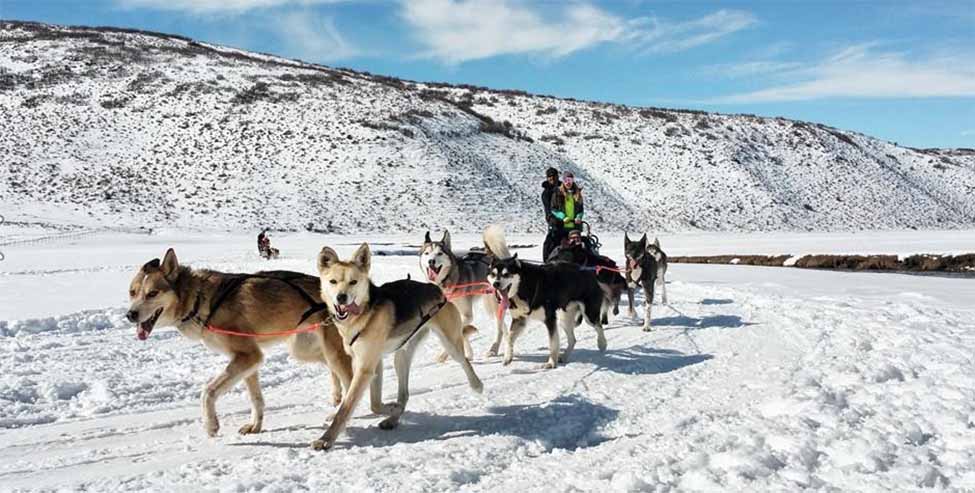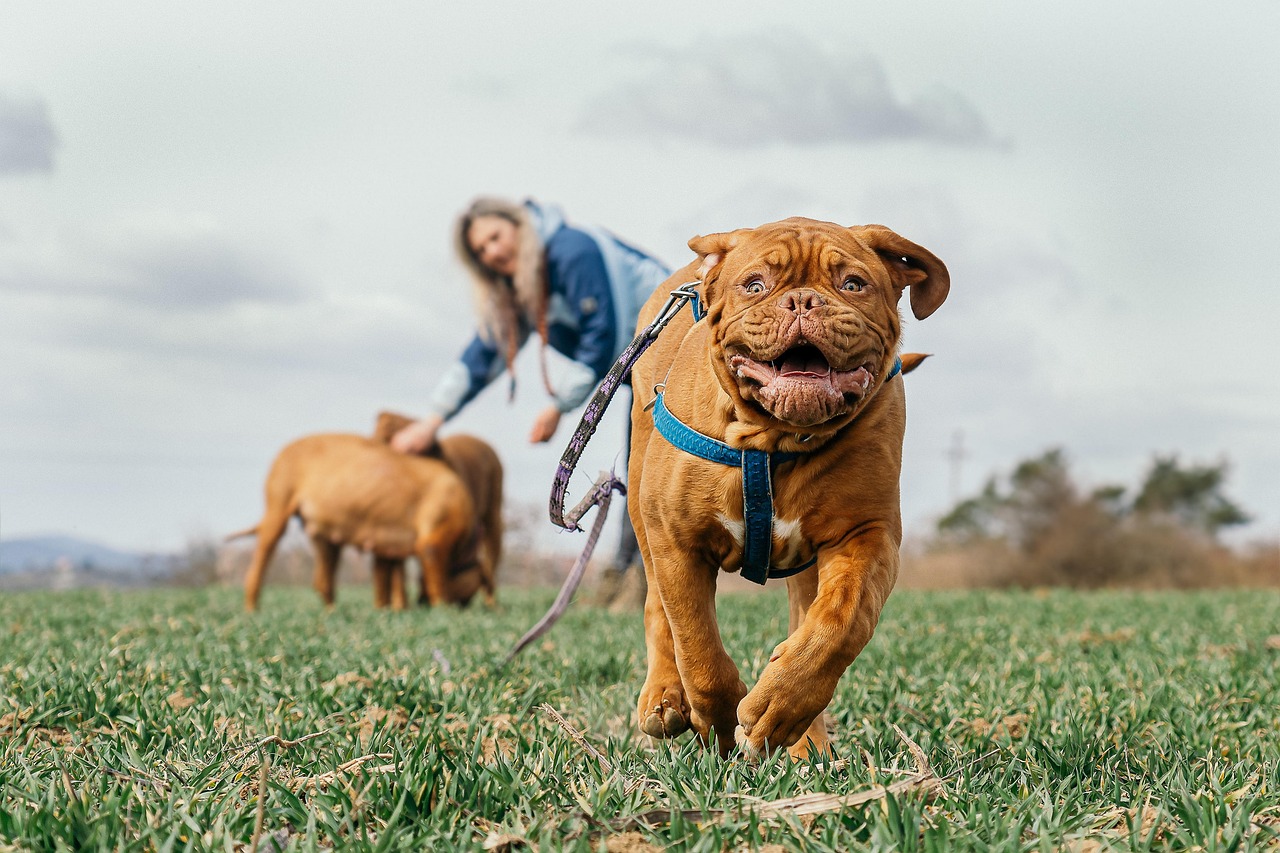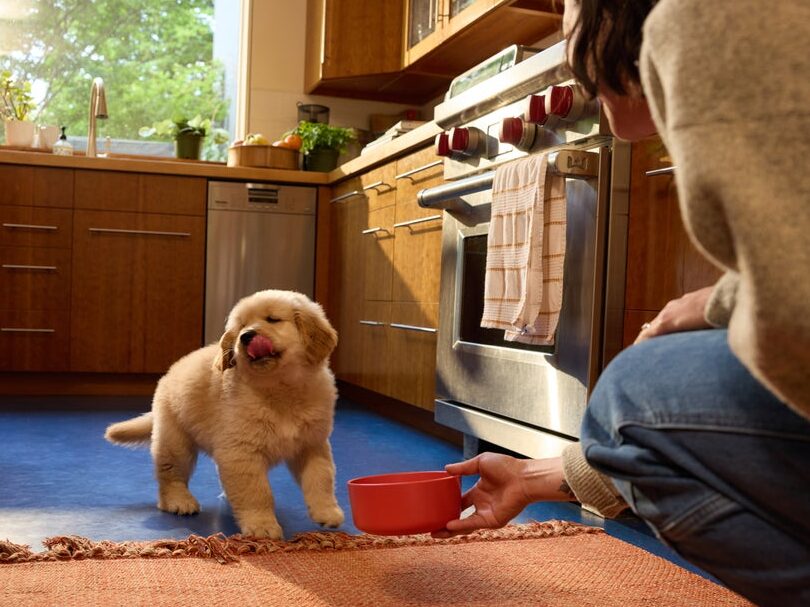Hey Ollie blog readers! We’re offering you an exclusive 60% OFF your starter box! Try now!
When you imagine a sled dog, you probably picture a purebred Siberian Husky trekking through the Alaskan tundra (or New York City on a particularly snowy day, but we digress). At Rancho Luna Lobos, located in Park City, Utah, however, the sled dogs are anything but cookie-cutter. Most have been rescued, and get to do what they love every day—whether it’s running with their pack or hanging out with kids at birthday parties—thanks to the awesome humans who work on the family-run ranch. We spoke with owner Dana Ramirez about how these "musher" pups are chosen, trained and why she considers them family.
Ollie: What inspired you to start Luna Lobos?
Ramirez: My husband, Fernando, has been running dogs from the age of 8 years old. As a boy, his parents expressed the importance of rescuing dogs rather than paying for the prestigious bloodlines of Siberian huskies. After we met in 2009, we both started rescuing the Nordic and Arctic mixes like Alaskan huskies, and started training for races and touring. Seven years ago we opened Rancho Luna Lobos, which means, "Ranch of the Moon Wolves," as our home-base. Now, 90 percent of our kennel are rescues.

Ollie: Why did you want to mainly work with rescue dogs?
Ramirez: When our guests come to visit, we can tell stories about each of them. Unlike the other companies that run tours, we do not believe in leasing dogs for the season and booting them out when the snow melts. We want to know how much we can ask from them, whether it’s touring or racing. Our dogs are like our kids.

Ollie: What is the process like to transition the rescues from shelter life to sledding?
Ramirez: It varies with each dog. Some take to running like they’ve done it their entire life. Some need months of consistent training. The few that we get that do not like running either become a ranch buddy, or we take our sweet time finding them active homes.

Ollie: What’s involved in the rescues’ training?
Ramirez: First, we get to know them. We study their quirks, ticks, what makes them happy. We will introduce them into a small team of dogs and start by trial training runs, which include pulling a sled or running at a steady pace by an ATV. Through these tests, we can figure out what kind of runner they will be. One thing I cannot stress enough is that you can’t force a dog to run! We cannot teach passion and drive. The dog has to want to be invested in the pull. If one dog, just one, does not want to pull, your team will not go anywhere, fast. Ask any musher. They have to love to run which 98 percent of the dogs we rescue do!

Ollie: How do you choose the dogs from the shelter to train?
Ramirez: The crazier the better. It’s always a hit and miss. We look for the Nordic mixes. Dogs that look like they need to run—you cannot teach drive and passion, remember. You would be surprised to hear that more people will surrender their dogs to us. We get so many calls from shelters and families that have crazy Nordic dogs they cannot handle or that may be a better fit for our line of running.

Ollie: Have there been any rescues who don’t want to sled?
Ramirez: Yes, most definitely. We will take the time to socialize them and have our employees work with them. Then we find them a great home so that they do not end up in a shelter. About 90 percent of them catch on and love it! The other ten percent like to run but like the sled dog diet more.

Ollie: Can you share a particularly special story about one of the Luna Lobos rescues?
Ramirez: We have one rescue dog named Umberto. When we first rescued him we noticed he acted a little strange, and he would shy away anytime we tried to pet him. He would sometimes run and bump into his friends or other dog houses. He was nervous and would shake all the time. As we watched him more closely, we realized he couldn’t see. Our vet came out and tested him, confirming that he was, in fact, blind. Most likely due to genetics or an infection at birth that had gone unnoticed. Worried that it would stress him out, we left Umberto behind when we did tours. We thought running on the team would be hard for him and cause him too much stress.
I would call Fernando and say that Umberto wouldn’t stop howling and crying the whole time his pack was gone. We decided to try him out on the team. Umberto quickly figured out that if he positioned himself between the gangline rope and a running buddy, he could figure out where he needed to go. Umberto now has three seeing eye buddies that help him to navigate the trails. He has become one of our strongest pullers and most passionate runners. He is on our number one team and will join us in all races.
Follow along with the Luna Lobos dogs on Facebook! And learn more about their pups that are up for adoption.
The Ollie blog is devoted to helping pet parents lead healthier lives with their pups. If you want to learn more about our fresh, human-grade food, check out MyOllie.com.
Tagged As:

The nutrition your dog needs,
the food they want.

Enjoying our articles? Subscribe our Newsletters and get new articles directly to your inbox
You might also like
23 September 2025
6 MINS READ
Back to School: Training Your Dog at Any Age
As we hit back-to-school season rolls around, it’s not just kids who benefit from sharpening their skills and learning something new—our dogs can, too! Training isn’t limited to puppies or p…
by Ollie Pets
23 September 2025
7 MINS READ
Lace Up and Leash Up: A Beginner’s Guide to Running with Your Dog
Running is one of the simplest ways to stay active, and it’s even better with a canine companion. Not only does running with your dog keep you both in great shape, it also strengthens your bond …
by Ollie Pets
13 May 2025
8 MINS READ
Puppy Training Guide & Behavior Timeline
Bringing home a puppy is pure magic. It’s also pure chaos—tiny teeth, zoomies, accidents in the house, and moments that make you wonder if you’re raising a future genius or a tiny tornado. …
by Ollie Pets







